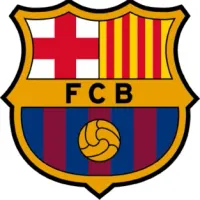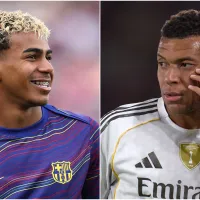Is it too soon to call Manchester City vs. Liverpool one of the best rivalries on Earth?
It might not have the quality of 2010’s Real vs Barca, nor the energy of AC Milan vs. Inter. It doesn’t have the sheer violence and bloodshed of Red Star and Partizan.
Yet, it may have the two brightest managers alive in Pep Guardiola and Jurgen Klopp.
Guardiola vs Klopp
Guardiola, who has managed Barcelona, Bayern, and City, has frequently butted heads with Klopp, manager of Mainz, Dortmund, and Liverpool.
“There are some managers, Jürgen is one, to challenge you to move a step forward,” Guardiola confided before a match at Anfield a year ago. The two have molded what we think of soccer today with their innovative strategies.
One of their biggest successes has been the revival of gegenpressing in modern football. They both used the tactic, and with significant success. The ideals of the gegenpress have been used far and wide, from local rec leagues to the World Cup.
Lots and lots of running
The gegenpress can be reduced to running. Lots and lots of running. The name gegenpress, or counter-press in German, borrows its name from the ideologies of the strategy; to pressure. It mainly tries to do this by sending one or more players to retain possession after winning the ball.
Although you can definitely link gegenpressing to Klopp and Guardiola, the basic tenets of the idea started in the 1960s with the Netherlands and Italy.
The “Total Football” teams of the 60s popularized pressing when the opponent was vulnerable to incoming attacks. Italian sides like Arrigo Sacchi’s Milan, struggling to score on conservative, slow offense would press sides non-stop, especially when offenses were close to the goal.
Those two old styles of soccer, combined with the tiki-taka style of play at Barca and in Spain, led Klopp to pioneer the gegenpress while at Mainz.
It led to near-immediate success, with Mainz winning promotion to the Bundesliga and qualifying for the UEFA Cup.
Not only did Klopp’s adoption of the gegenpress directly lead to a golden era of soccer for Mainz, but it earned him jobs at Dortmund and Liverpool as well.
With different managers come different variations of gegenpressing. Where Klopp likes throwing as many players as possible after losing the ball, Guardiola likes blocking other players close to the person with the ball and slowly converging on the player.
Klopp likes to immediately counter-attack after winning back the ball, pressuring the already-weak defense even more. But Guardiola likes forcing a big clearance and playing out of the back thanks to his experience with tiki-taka.
The good
The good part about the gegenpress is that it catches people off-guard, physically and mentally. By swarming a player that has only just got the ball, you leave them disoriented and overwhelmed, resulting in not only a loss in possession but also a chance to counter-attack from a good spot.
A good example of the benefits of the high press was City’s second goal in their 3-1 win over Leeds. After two City attackers press Pascal Struijk, Struijk has to play it back to Liam Cooper. Erling Haaland presses Cooper and blocks the only available passing lane, forcing Cooper into an error.
Not only does a successful gegenpress result in a good chance high up the pitch, but it stifles the opposing offense. By swarming the defense, the press should cut off the back line from the midfield, meaning that the defense has nowhere to send the ball but away.
It’s the reason why City and Liverpool are first and second(respectively) in total touches and average percentage of possession.
You also do not rely on a central playmaker as much with the gegenpress.
Although it’s nice to have a De Bruyne or a Saka in your squad to create goals, you do not need to have them create opportunities if you already have the ball in a great position.
Gegenpressing lets you win back the ball nearer to the goal. It’s only one pass away from a really good opportunity. No playmaker in the world can be as good as a good gegenpressing situation, and that’s why it’s so important.
Jurgen Klopp talks about the benefits of gegenpressing.
The bad
Some European sides do not like the gegenpress despite its obvious benefits; and for good reason. The gegenpress takes a physical toll on players. Every player; not just the attackers has to be fit.
When you press so aggressively, it leaves holes in an otherwise-solid formation that needs to be plugged. So there is a lot of moving pieces that have to fit together for the gegenpress to work.
Not only that, but the players must be coordinated and tactically intelligent to make it work. Players have to recognize when the best moments are to press; a bad touch, a shaky back-pass, a player forced onto his weak foot. If everything is not sychronized, the back line can beat the press, with disastrous effects.
A good example of the high press gone wrong was the counter-attack that Brentford launched on Spurs in their 2-2 Boxing Day draw.
After Ben Mee finds the space to send a long ball to Ivan Toney while fighting off the high Tottenham front-line, Toney can find Bryan Mbeumo on an overlapping runs. The 4-on-5 counter-attacks results with Mbeumo finding Mathias Jensen at the back post.
Fraser Forster saves Jensen’s shot, but Vitaly Janelt converts the rebound to give Brentford the opener.
How the gegenpress will help teams in 2023
In most of the Top 5 Leagues, there are a handful of teams looking to use the gegenpress to mount a title challenge. In Ligue 1, perennial champions PSG are the only contending team that consistently uses the gegenpress, although Lyon(8th), Lille(6th), and Toulouse(13th) also use the tactic.
Bayern is the main gegenpressing team in the Bundesliga, obviously inspired by the previous press-heavy managers of Pep Guardiola and Hansi Flick. Frankfurt(4th), Werder Bremen(9th), Bochum(17th) are also press-heavy teams, who have used the high line with differing levels of success.
Serie A has seen league leaders Napoli adopt the gegenpressing tactics, along with sides like Fiorentina(10th), Cremonese(17th), and Bologna(11th) also pressuring people high up the pitch.
LaLiga’s more conservative approach to the gegenpress has seen teams like Athletic Club(5th), Espanyol(16th), and league leaders Barcelona be more aggressive.
In the Premier League, where you can find elements of the gegenpress in each side, you can find the gegenpress with teams like City, Liverpool, Spurs, Southampton, and Leeds, still inspired by club legend Marcelo Bielsa.
The league positions of different gegenpressing sides shows that the gegenpress is not an automatic cheat code. It’s a testament to the tactical ingenuity of Pep, Klopp, Ralf Rangnick, and more that they’ve been able to lift their teams to higher levels.
Photo credit: IMAGO / Colorsport














